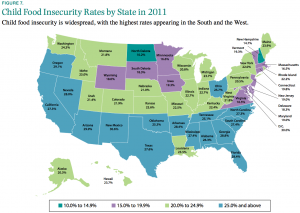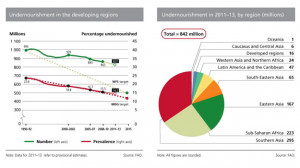Here you will find this blog Food Insecurity summarized in a Powerpoint presentation.
Assignment 6: Guest Post
For this post I would like to introduce a guest post of mine on a fellow peer’s blog. In Abao’s blogs he expresses his outlook on ads in New York City’s transit system. The good the bad and the ugly is a good way to translate his view’s on certain aspects of advertisement in the subway. In my posting I express the need for conscientious thinking in advertising more specifically our civil and health needs. Being a commuter myself I see countless of useless information being plastered on the subway. From inside the subway, on the platform, and above ground there are countless ads promoting everything this modern era has to offer. So in my post I tried to promote the need for advertisement on our health, and civil needs correlating, and hopefully branching out to other issue like our environmental needs.
https://openlab.citytech.cuny.edu/groups/abaoad/
Filed under advertisement, Food Insecurity, Politics, Uncategorized
Assignment 7: The Idea
Upon reading an article called As The Income Gap Widens New York Grows Apart I realized how well it correlated with my blog on food insecurity. The article is written by a James Parrott (Deputy Director and chief economist of the Fiscal Policy Institute) and he addresses an issue that is not only effecting NYC, but also the rest of the nation. In this article the income disparities in New York City is expose and broken down in a way that is easy for some to understand, but difficult to accept. So when I found out the severity of food insecurity in American I couldn’t help but link the two topics together. Making New York City the prime example of severe income disparities and inefficient government interference.
What makes this article unique is the actual financial evidences it presents. This evidences helps us understand the severity of the income disparities in America with emphasis in New York City. With such an unbalance distribution of income, New Yorkers living in poverty suffer from other secondary issues that stem from the disparities of income. Among these secondary issues I feel that food insecurity is just one of many issues created by the polarization of income in the U.S. but more so in New York City.
Source: Juanita But, Mark Noonan, Sean Scanlan (2007) The Place Where We Dwell; Reading and Writing of New York City, PG180, As The Income Gap Widens
Filed under Finances, Food Insecurity, Income, Politics
Effects of New York’s Income disparities 4 of 4
All in all the effects of income getting funneled to the top 1 percent while the lower class struggles is a conundrum in itself. Federal and State government addresses the financial strain that some government funded programs produce, but always seems to leave out the bigger issue. Our health, moral, and civic amenities needs just as much improvement. The City of New York is a prime example of greed; not just on a corporate level, but greed on an individual level. As of 2007 the population of New York reached 8.3 million people. These numbers speak for themselves; 90,000 residents equaling to 34,500 household make exactly 3.7 million dollars a year (that’s exactly 7.7% of NYC population). While 27.6 % of New Yorker live in deep poverty; all of whom could be easily be consider food insecure. With the top 1% receiving so much income it has become nearly impossible for those living in poverty to maintain a healthy diet. With numbers like these it only makes sense for congress to pass bills like the Farm Bill. To help those household receiving monthly food stamps sustain a healthy diet at a low cost. Help the local economy and promote better eating habits which will also create healthier Americans.
Filed under Finances, Food Insecurity, Income, Politics
Effects of New York’s Income disparities 3 of 4
In addition to these disturbing facts there are also accompanied with some other alarming statistics. The Parrott points out that the 90,000 people that represent New York City’s one percent have an average household income of $3.7 million dollars. While at the same time there are 900,000 residents of New York City that are consider to be in deep poverty. For a family of four living in deep poverty that translate to about $10,500 a year. He also reports the average income for a household in New York City is below $30,000 a year while the top one percent makes about $10,137 a day. Making New York State and New York City the most “polarized” within the 50 States and 25 major cities across America. With the presented information Parrott attempts to sort the disparity in income in America between inflation, the need for a higher skilled workforce, and political incentive. It is evident with the information given that your income can and will determine how well you can feed and care for your family.
Source: Juanita But, Mark Noonan, Sean Scanlan (2007) The Place Where We Dwell; Reading and Writing of New York City, PG180, As The Income Gap Widens written by James Parrott
Filed under Finances, Food Insecurity, Income, Politics
Effects of New York’s Income disparities 2 of 4
Going back to the post-war era the United States economy was steadily climbing. The middle class grew and those living in poverty where able to work their way out creating better lives for themselves and their families. It was a good time for everyone even the top one percent reap the benefits with gains in theirs markets. This was the case for many Americans until the 80’s when something change. Between 1980 and 1990 the top one percent national average income was a steady 12%. In New York City it Jump from the national 12% to 20% all within the same decade. By 1990 New York City was creating the beginning of what yet to come. Entering 1990 there was no end in sight by the end of the decade the top one percent’s gross income reached a staggering 35%. After idling on the top due to a recession the top one percent’s gross income in New York City double the national high of 23.5% and by 2007 their shared gross income was at 44%. With the top 1 percent receiving 44% of the income in the U.S. they’re leaving those families living in deep poverty to rely on the systems food benefit programs. Although they will be receiving monthly food stamps, they’re force to purchase high sodium and Trans fat foods that only creates secondary long term health conditions like obesity and diabetes.
Source: Juanita But, Mark Noonan, Sean Scanlan (2007) The Place Where We Dwell; Reading and Writing of New York City, PG180, As The Income Gap Widens
Filed under Food Insecurity, Income, Politics
Effects of New York City’s Income Disparity 1 of 4
When talking about hunger in America ones income is also a factor. New York City is the financial capital of the world but also owns the title of being the most financially polarized city of the world. For every $1 a person who is considered living in poverty makes, his counterpart in the top one percent gets $352. With an income disparity like this in our major cities it will only accelerates the causes and effects of hunger and the secondary issues it cultivates. In these series of post I will help point out the factors that contribute so negatively to our society.
Filed under Finances, Food Insecurity, Politics
Assignment 8: The Farm Bill
While browsing several blog sites I came across a posting by Oran Hesterman’s shedding light on a viable solution to minimize food insecurity and some of its secondary issues. In this posting he talks about the farm bill. If congress would have passed the farm bill it would have help those families receiving food stamps maintain a balance and nutritional diet. Basically by shopping at their local farmers market the recipients will receive a dollar credit for every dollar they spend, redeeming up to $20 per visit. Not only the individual but the farmer and the local economy stood to gain. In addition to finding a way to help combat hunger in America. With the passing of the farm bill it would of help combat against the secondary issues of food insecurity like obesity and diabetes. By offering these incentives people are able to maintain a balance and healthy diet while their local economy flourish.
Filed under Food Insecurity, Politics
Assignment 5: How We See Food Insecurity
http://www.un.org/waterforlifedecade/food_security.shtml
Here is a map showing us the percentages of children that are considered to be food insecure. You will see exactly which regions and states are affected the most, and which states are leading the nation in managing this crisis. Out of fifty states only two states (North Dakota and New Hampshire) fell below what is considered average and over one third of American states are above average conditions. You have the southern states with the exemption of Louisiana and some western states with an alarming rate of children that are food insecure. Reaching up to 30% in some states our nation’s capital was not exempt. Falling second to worse in the nation and surpassing all the major cities and states with New Mexico taking number one. With a national average of 22.9% Americans in the U.S. that falls under this percentile experience food insecurity in a much more different way than the rest of the world. With the combination of Sub – Saharan Africa, Eastern and Southern Asia these regions of the world make up more than half of the people that are effected by food insecurity. Mainly due to the lack of infrastructure in remote areas, but in America food insecurity seems to be much different. For example after conducting a research project for an English course, I’ve learned that we have financially polarize cities that contribute negatively to our food insecurity crisis. In New York City there are about houses 90,000 people with an annual income of 3.7 million dollars. While at the same time there are 900,000 residents of New York City that are living in deep poverty whom all are considered to be food insecure with an annual income of $10,500. With the given information on the chart and map it is a clear indication that something need to be done. We need to be better informed citizens and band together to help minimizes hunger, promote and demand better services for those in need.
Filed under Food Insecurity
Chris Brogan Review
What’s your purpose? Chris Brogan explains his reasons to why he and others should put emphasis on good quality articles and postings on social media. In this day and age social media makes it is easy for all of us to express our feelings and concerns towards an array of global issue. With all the free information we come across on the internet it is easy to overlook useful information because it’s free and we’re always able to get back to it but never do. What Brogan is trying to relay to us is that he’s subconsciously taking steps on delivering meaningful and accurate information via his establish media outlets. All of which is free that may contain the same value of information as if you had paid for it. With this approach Brogan is focusing on producing material that will be of relevance and will attract the attention of those interested on what’s being discussed.
http://www.chrisbrogan.com/the-single-most-effective-change-i-made-to-my-digital-presence/
Comments Off on Chris Brogan Review
Filed under Uncategorized





